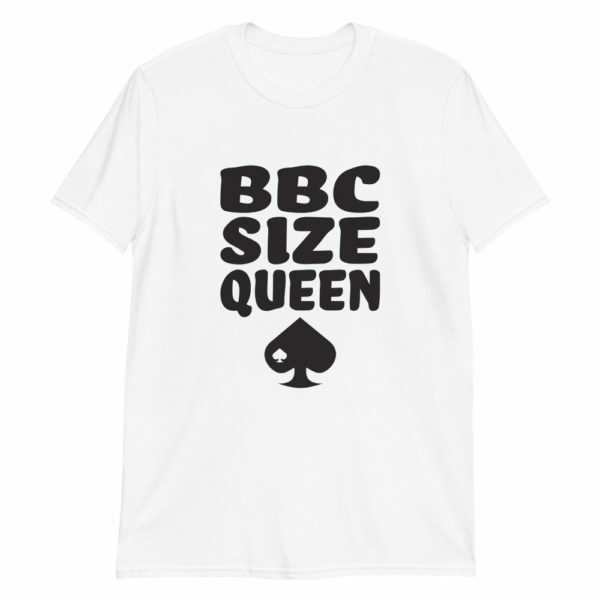Is size truly the ultimate factor in the realm of attraction and intimacy? For some, the pursuit of an ideal, often measured in inches and girth, dominates their desires, creating a world where physical dimensions dictate worth and desirability.
The digital landscape, as well as real-world interactions, is increasingly revealing a fascination with the concept of "size queens" and their preferences. Discussions range from the practical what dimensions are necessary to meet expectations to the sociological, delving into the impact of these preferences on relationships, self-esteem, and the perpetuation of stereotypes. The terminology itself is revealing, with phrases like "massive BBC status" (referring to "Big Black Cock") and assessments of penis size taking center stage in conversations across various platforms.
The phenomenon transcends mere physical attraction, touching upon issues of identity, race, and societal expectations. For some, particularly within specific subcultures, the preference for a larger penis is a defining characteristic, while for others, it is a source of insecurity or disappointment. Understanding the nuances of this complex dynamic is crucial for navigating the often-conflicting narratives surrounding size and intimacy. The conversations highlight the varying degrees of importance people give to physical attributes and the potential for both validation and exclusion within this specific social context.
| Aspect | Details |
|---|---|
| Concept Overview | The discussion revolves around "size queens," individuals who express a strong preference for men with larger penises. This often intersects with discussions of sexual performance, body image, and the construction of sexual desirability. The term "BBC" (Big Black Cock) is frequently used, sometimes raising questions of racial fetishization. |
| Prevalent Themes |
|
| Impact on Individuals |
|
| Contextual Relevance |
|
| Criticism and Controversy |
|
| Reference websites | wikipedia.org |
The conversation delves into the specific dimensions that define the sought-after "massive BBC status." The emphasis on length and girth is evident, with individuals openly discussing their own measurements and aspirations. Some participants express concerns about their physical characteristics, while others showcase confidence in their perceived size. One user, for example, states, "Size right now is 6.2 erect length / 5.5 mseg...my main concern is what size do i need to be considered massive BBC status." Others describe an upwards curve affecting length, stating, "Im 7.25 bp and wish to be around 8.5x6 erect."
The term "size queen" itself appears in various contexts, with different interpretations. Some identify as size queens and emphasize that their preference does not exclude men of smaller sizes, highlighting that the individual's personality and connection still take precedence. "Im definitely a size queen, but I dont exclude guys based on size, even the ones with really little dicks," says one user. "Its the person who excites me, not the junk." However, other instances point to a more rigid adherence to size criteria, stating, "If you walk up to a size queen with less than 7 nbp length and 5.5 girth, I don't think her pants are even coming off."
The intersection of race and size is often present in these discussions. The phrase "big black cock" or "BBC" is a frequent search term and descriptor. This brings into focus the complexities of racial fetishization. Roy Celaire, a Master's student at Oxford University, articulates the impact of such stereotypes, describing the pressure on Black men to fulfill the hypersexualized "stud" fantasy. This underscores the potential for these preferences to reinforce or perpetuate harmful stereotypes, creating pressure for certain racial groups to embody specific sexual ideals. The conversations frequently refer to the exoticization of Black men and their bodies.
Within certain social and online communities, the concept of a "size queen" is a well-defined identity, with specialized podcasts, blogs, and forums dedicated to discussing the topic. For instance, "The Size Queen Society" podcast offers a platform for exploring this world and celebrating the idea that "bigger truly means better." These platforms provide a space for like-minded individuals to connect, share experiences, and explore the dynamics of size-based preferences.
Another element of the ongoing discourse revolves around specific individuals. The mention of a "Bethany Carter" as a point of influence suggests a possible figure within these communities or a person central to a narrative of transformation or influence. The reference to "Katherine Newton" and her transition into a "size queen" highlights the idea of a change, prompting the question of the factors that might lead an individual to develop such a preference. The discussion suggests that external factors and personal influences can significantly shape ones sexual preferences and expectations.
The dialogues surrounding "size queens" raise questions about the role of social media, online communities, and the broader media landscape in shaping sexual preferences and body image. The increasing visibility of these conversations reflects the evolving nature of intimacy and the diverse ways in which individuals navigate their sexual desires and relationships. As with any discourse around sexuality, these conversations offer perspectives on shifting attitudes, and individual experiences within a complex social framework.
It's important to acknowledge the potential for problematic aspects within the size queen community. The prevalence of size-based judgments can exacerbate issues of body image and self-esteem, especially for those whose anatomy does not conform to prevalent ideals. The emphasis on size may contribute to a culture of objectification, where individuals are valued primarily for their physical attributes rather than their emotional, intellectual, and interpersonal qualities. When racial stereotypes are embedded within the conversation, it can amplify the sense of objectification.
Despite the complexities and potential pitfalls, conversations surrounding size offer insights into evolving notions of sexuality, desire, and attraction. These dialogues underscore the various ways people experience intimacy. While some people prioritize size, others embrace broader ideals. Ultimately, the key lies in open and honest communication, the ability to respect different preferences, and an understanding that personal value extends beyond the physical.


